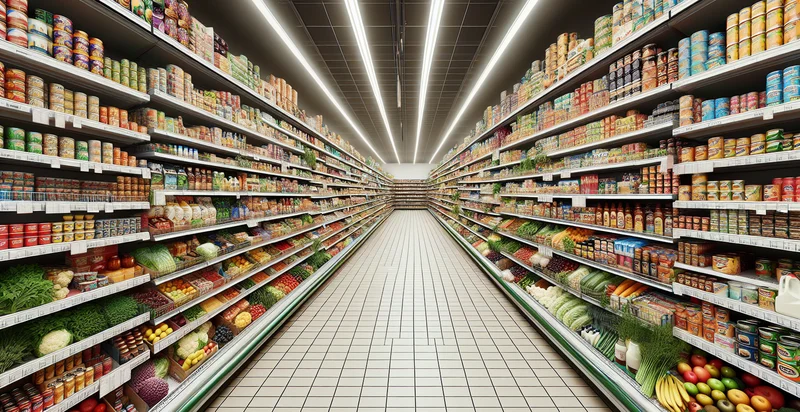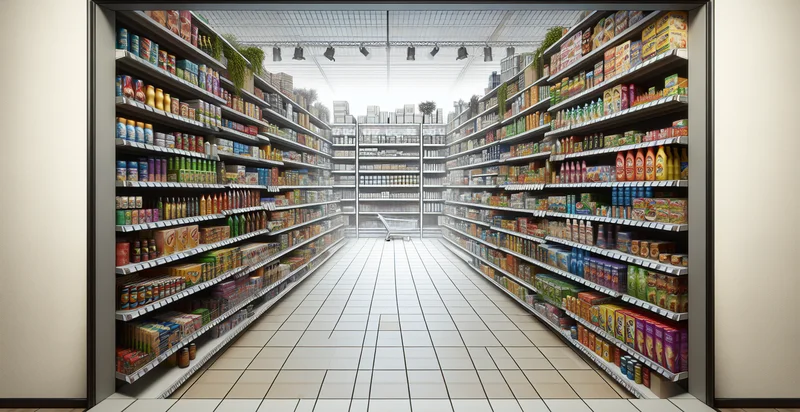Identify missing grocery shelf item
using AI
Below is a free classifier to identify missing grocery shelf item. Just upload your image, and our AI will predict if the grocery shelf item is missing - in just seconds.

Contact us for API access
Or, use Nyckel to build highly-accurate custom classifiers in just minutes. No PhD required.
Get started
import nyckel
credentials = nyckel.Credentials("YOUR_CLIENT_ID", "YOUR_CLIENT_SECRET")
nyckel.invoke("missing-grocery-shelf-item", "your_image_url", credentials)
fetch('https://www.nyckel.com/v1/functions/missing-grocery-shelf-item/invoke', {
method: 'POST',
headers: {
'Authorization': 'Bearer ' + 'YOUR_BEARER_TOKEN',
'Content-Type': 'application/json',
},
body: JSON.stringify(
{"data": "your_image_url"}
)
})
.then(response => response.json())
.then(data => console.log(data));
curl -X POST \
-H "Content-Type: application/json" \
-H "Authorization: Bearer YOUR_BEARER_TOKEN" \
-d '{"data": "your_image_url"}' \
https://www.nyckel.com/v1/functions/missing-grocery-shelf-item/invoke
How this classifier works
To start, upload your image. Our AI tool will then predict if the grocery shelf item is missing.
This pretrained image model uses a Nyckel-created dataset and has 2 labels, including Available Item and Missing Item.
We'll also show a confidence score (the higher the number, the more confident the AI model is around if the grocery shelf item is missing).
Whether you're just curious or building missing grocery shelf item detection into your application, we hope our classifier proves helpful.
Related Classifiers
Need to identify missing grocery shelf item at scale?
Get API or Zapier access to this classifier for free. It's perfect for:
- Stock Replenishment Alert: This use case involves a real-time alert system for grocery store managers when an item is missing from a shelf. The true image classification function scans store shelves and identifies any gaps, enabling more efficient restocking before customers notice the absence of popular products.
- Inventory Management Optimization: Grocery store operators can use this function to analyze inventory levels more effectively. By identifying missing items, it helps ensure that the right products are in stock, minimizing wastage and improving turnover rates.
- Customer Experience Enhancement: The implementation of this image classification system can lead to improved customer satisfaction. By ensuring that items are consistently available on shelves, retailers can prevent customer frustration associated with out-of-stock situations, leading to a better shopping experience.
- Data-Driven Merchandising Decisions: This technology provides valuable insights into product placement and inventory performance. By frequently identifying missing items, store owners can adjust merchandising strategies based on actual shelf data, optimizing product visibility and sales.
- Loss Prevention Strategy: By monitoring shelves in real-time, the function can also help in identifying potential theft incidents. Retailers can respond quickly to missing items that might be a result of shoplifting, thereby enhancing their loss prevention efforts.
- Dynamic Pricing Adjustments: Retailers can utilize this image classification function to identify trends in missing items which may signal increasing demand for specific products. This information can inform dynamic pricing strategies, allowing stores to adjust prices to maximize revenue on high-demand items.
- Automated Reporting for Suppliers: This use case facilitates better communication between grocery stores and their suppliers. By reporting missing items automatically, stores can streamline ordering processes with suppliers, ensuring timely replenishment and reducing the chances of stockouts.


